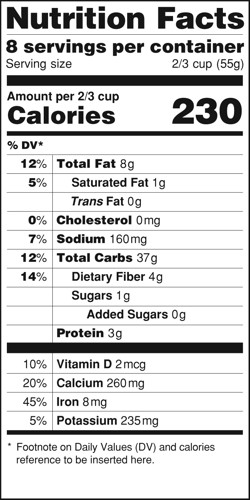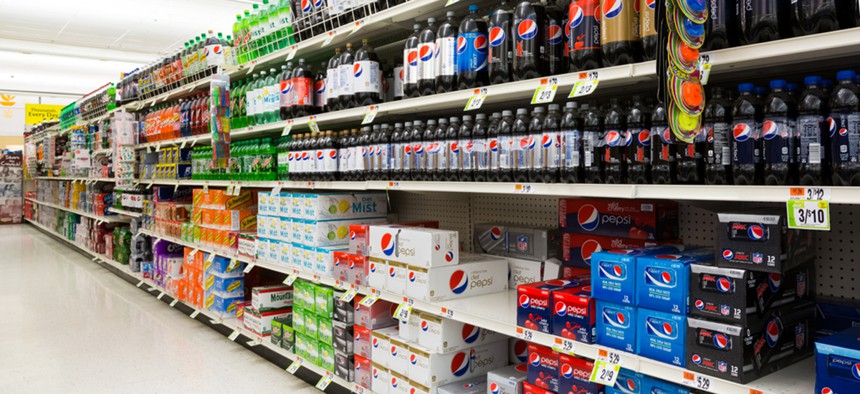A new rule proposed by the FDA might make you think twice before grabbing that soda from the corner bodega. The agency just recommended a subtle change to the mandatory Nutrition Facts label: more clarity on the sweeteners added to packaged foods. If the proposed changes are adopted, “added sugars”—those not naturally occurring in the food—will be featured prominently in the label’s “Total Carbs” section and, for the first time, declared as a percent daily value.
The FDA now advises that consumers get no more than 10 percent of their daily calories from added sugars—200 calories, according to the standard 2,000-calories-a-day guideline. As Fortune points out, that’s roughly the number of calories in just one 20-ounce bottle of Coke. Americans are already consuming too much added sugar, according to a USDA/HHS report. On average, we consume up to 16 percent of our daily calories from the sweet stuff.

under “Total Carbs.” (FDA)
The FDA is taking a harder line on sugar than it did on salt, for which the agency proposed a daily value of 2,300 milligrams. The FDA asked for research into whether a much lower value, 1,500 milligrams, might be healthier. But ultimately, the agency found the scientific evidence “inconsistent and insufficient to conclude that lowering sodium intakes below 2,300 mg/day will increase or decrease the risk of cardiovascular disease outcomes or mortality in the general U.S. population.” The added sugar rule, by contrast, reflects a growing scientific consensus linking excessive sugar consumption to increased risk of obesity, diabetes, and cardiovascular disease.
Of course, food labeling isn’t an end in and of itself. While the information may or may not change consumer behavior, labeling can also work by encouraging manufacturers to reformulate their products and offer healthier alternatives. The American Beverage Association, which represents the soda industry, argues that it’s already doing that voluntarily, by making calorie counts more visible and by replacing full-calorie sodas with low- or no-calorie options in schools, Fortune reports. On the other hand, those same manufacturers are suing the city of San Franciscofor requiring warning labels on sugary sodas.
The controversy is sure to continue through the FDA’s public comment period, which ends in October. After that, the agency will review the feedback and issue a final rule. But however it shakes out, your best bet is to follow theAmerican Heart Association’s recommended limits on added sugar intake: no more than 6 teaspoons per day for women and 9 teaspoons per day for men.
(Image via mandritoiu / Shutterstock.com )



